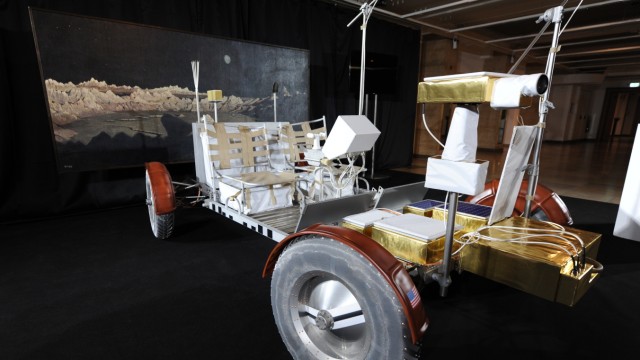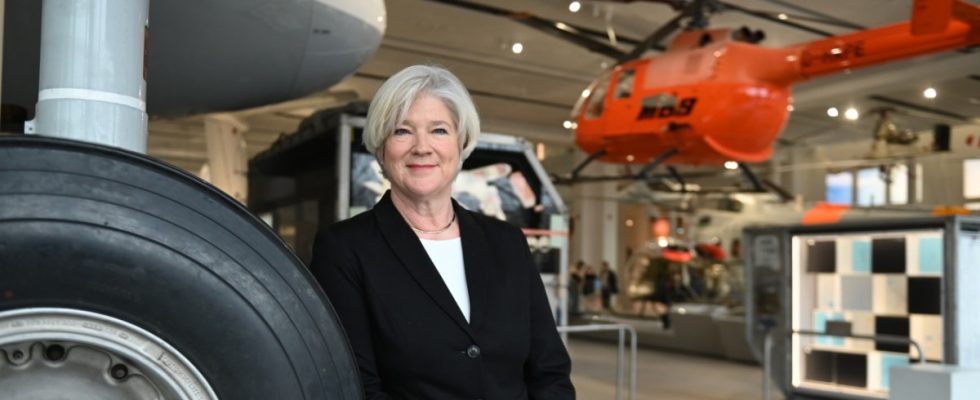To say goodbye, they all sang the Steigerlied together again in the mine. “Some had tears in their eyes afterwards,” says Brigitte Böhm. Also for the new chairwoman of the Friends and Supporters of the German Museum That evening a year ago was memorable, as the legendary mine with its lifelike installations was one of the icons of the museum. An icon with which many Munich residents associate childhood memories and which had to be expanded due to the museum renovation. It is still uncertain whether she will come back.
Together with her son, Böhm accompanied the improvised choir on the guitar that evening, while employees, curators and members of the circle of friends intoned the nine verses of the traditional song: “… And if I return home, to my beloved, then the miner will ring out Greetings at night, good luck, good luck!”
The mine, says Brigitte Böhm, is particularly close to her heart. And because she knows how many museum lovers feel the same way, she wants to pull out all the stops so that it can be returned to its old place. The papier-mâché backdrops, the carts, lights, hammers and chisels, the coal, the ore and the miner dolls – everything has now been dismantled and stored. The monument protection authority has approved the expansion.
The famous mine has been expanded. His future is uncertain.
(Photo: Gerrit Faust/German Museum)
The museum would like to recreate the atmosphere of the historic mine, which showcased crucial phases of German industrial history, in a future installation as close to the original as possible. But it also has plans to continue telling the history of mining up to the present day – just as is appropriate for a modern technology museum: Today, people in distant countries mine the rare earths that are used in cell phones, cars and computers, sometimes under catastrophic conditions are. However, there is not yet any money to restore the extremely complex exhibition. Brigitte Böhm still has to drum up a lot of advertising.
In November she took over her voluntary position from her predecessor Sabine Rojahn. She is the fourth woman to head the association, which was founded more than twenty years ago to collect donations for the museum’s future initiative. The general renovation of the famous house, which has been going on for years, would not have been possible without private money. And as with theaters, opera houses and other museums, many program contents are only possible through a support association.

You can virtually drive over the moon with a replica of the moon car.
(Photo: Stephan Rumpf)
The museum app, which is an indispensable companion for visitors with its wealth of additional information and is available in several languages, was financed with the help of the association. Likewise, the virtual ride on the moon: with VR glasses on your head, you can sit in a replica of the lunar car from Apollo missions 15, 16 and 17 (the original remained on the moon) and rumble over the stony ground of our earth’s satellite. Or the glass laboratory: scientists from the Technical University of Munich carry out “live” experiments there and answer questions. And that the rescue cruiser Theodore Heusswhich is in the museum garden, is now accessible again, which was also made possible by the support group.
“We combine tradition and modernity in the German Museum,” says Brigitte Böhm, who grew up in Munich and was in the museum as an elementary school student. She experienced how important it is to impart knowledge well in high school. “I got an F in my first year of chemistry,” she says and laughs. It was only her teacher the following year who was able to awaken her interest in the subject. After graduating from high school, she wavered between chemistry and law when choosing a course of study, says Böhm, and ultimately decided on science. She received her doctorate in chemistry, trained as a patent attorney and became a successful partner in the Munich law firm Weickmann und Weickmann.
She recently retired, and now – in addition to her newborn grandchild and hobbies such as playing the piano and sailing – she wants to devote all her energy to the German Museum. “I want to make the club even more active and attractive,” she says, looking ahead to the coming years. She knows what to expect because she has been on the board for two years. “My predecessor trained me perfectly.” Brigitte Böhm and Sabine Rojahn have known each other for a long time. “It was a matter of honor to take on the job,” says the successor. After all, Böhm’s entire family is a member of the support association, her husband as well as her two children, who are 30 and 32 years old. These are good conditions.
Böhm notes that money is no longer as easy for patrons as it used to be. In her opinion, it should be a matter of course for traditional Munich companies to get involved in the German Museum. “Our cultural institutions need committed citizens,” she says. “And the German Museum is not just a Sunday treat for the whole family and a tourist magnet. Research is carried out there and young scientists are promoted there, which our country urgently needs.”

The large model railway in the German Museum has been renovated, but it should run more often, says Brigitte Böhm.
(Photo: Robert Haas)
Anyone who is a member of the support group is invited to exclusive events. In the program “Art meets technology – technology meets art” the friends of the Deutsches Museum and the Pinakotheken exchange ideas, there is an evening with a special tour in one of the houses – most recently in the exhibition “Glitch. The art of disruption” in the Pinakothek der Moderne – followed by an exchange over a glass of wine and snacks. The circle of friends also offers educational trips. Sabine Rojahn, who tirelessly promoted the association and constantly developed new ideas, says: “I had great experiences at the Deutsches Museum, met great people and broadened my horizons. Overall, I found my time as chairwoman to be a great enrichment.”
Now Brigitte Böhm wants to make the association even better known so that it can support other important projects. There needs to be more tours in the museum, she says. “And the hands-on objects all have to work.” This also costs personnel. And then she has a personal wish: “The model train should run more often!” A train that stands still is boring. But the new club chairwoman will also stubbornly continue to campaign for the mine. “Good luck” is a good motto.
The Friends of the German Museum
The Friends and Supporters of the German Museum (FFK) with its around 450 members supports the German Museum in realizing projects that the museum could not otherwise afford. This can be the purchase of exhibits, the financing of catalogs, special tours or workshops, for example for children, seniors or students, and the expansion of digital offerings. The FFK is also a member of the museum’s founding group: with a total of fifty million euros in donations, ten companies and institutions contributed to ensuring that the modernization of the German Museum can take place.

